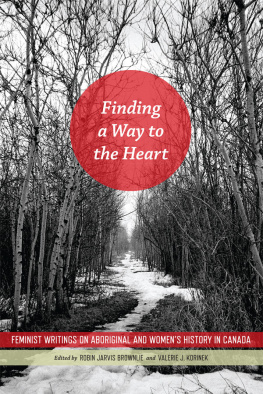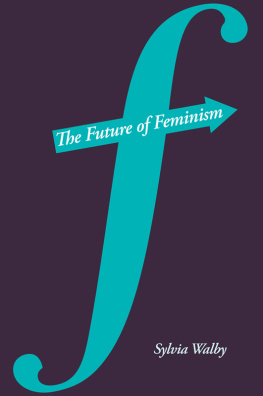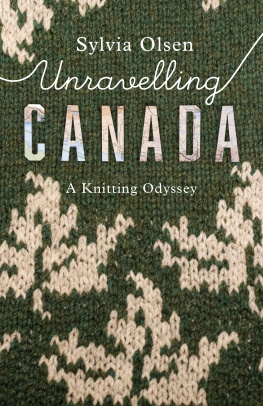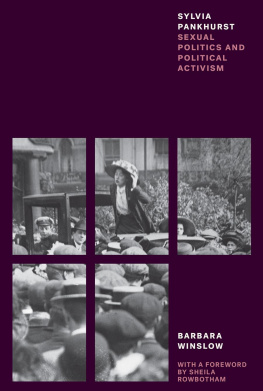Acknowledgements
IF, AS HILLARY CLINTON HAS ASSERTED, it takes a village to raise a child, it takes a small town to complete an academic anthology. We wish to thank a number of key individuals without whom Finding a Way to the Heart would never have seen the light of day. First, we thank Franca Iacovetta and Heidi Bohaker for initiating this project in 2007 when they organized the Canadian Historical Association Roundtable Many Tender Ties: A Forum in Honour of Sylvia Van Kirk. This panel brought together scholars, students, and colleagues to provide a retrospective assessment of Sylvias academic accomplishments. The enthusiasm generated by that panel convinced us that something more permanent would be beneficial for scholars and students, and clearly indicated that there was a receptive audience. Having provided us with an excellent start, Franca and Heidi passed the baton to Jarvis and myself, who agreed to take over the next stage of producing a scholarly anthology.
When we mapped out our editorial strategy, we envisaged that the luxury of space and time provided by a book allowed us a more sustained focus on the two major analytical arcs of Sylvias careerFirst Nations and womens history. A call for papers was circulated, our original panel participants were invited to contribute and, additionally, we sought out other academics that we believed had important contributions to make. In the end, we wish to thank the amazing group of scholars who contributed to this volume: Jennifer Brown, Victoria Freeman, Franca Iacovetta, Rob Innes, Betsy Jameson, Pat McCormack, Kathryn McPherson, Adele Perry, Katrina Srigley, and Angela Wanhalla. They have been a great crew to work with, consummate professionals, and excellent scholars. The essays they produced for this volume offer important contributions to Canadian history and historiography, perspectives on the hidden aspects of the academy, and represent scholars at all career stages, from emerging and established scholars to those at the pinnacle of their careers. We appreciate their patience and their confidence in us.
Moving from our contributors to our producers, we cannot praise the editors and staff at the University of Manitoba Press too highly. They have been simply fantastic to work with at every stage of this project. Our editor David Carr was enthusiastic about Finding a Way to the Heart from our first informal discussions. He expertly shepherded us through the submission and review process, providing sage, timely, and encouraging advice. Glenn Bergen, who has led the editorial team since the manuscript arrived at the UMP offices, displayed great calm under pressure and has been responsive to all of our requests and questions. We are fortunate that the editorial staff, the copy-editors, designers, and all others involved in the production of this book have brought such creative energy and excellence to our volume. Weve been privileged to work with them and wish to thank them for making this handsome publication possible.
Finally, on our respective home fronts, we wish to thank our partners Roewan Crowe and Penny Skilnik for their encouragement and support. Both of them gave us the gift of time, much of which was stolen from weekends and evenings, to finalize this project. They shared our understanding of the political and academic importance of this feminist academic project. In many conversations over the years, they have helped us deepen our grasp of feminist questioning and analysis, and we are very grateful.
Robin Jarvis Brownlie
Valerie J. Korinek

Ties Across the Border - by Elizabeth Jameson
Elizabeth Jameson
SYLVIA VAN KIRK HAS INFLUENCED THE WRITING of American history as have few Canadian historians. Her influence is most evident in histories of the U.S. fur trade, women in the U.S. West, and in histories of Native-Newcomer relations. The frameworks of these fields shifted in the 1980s through Van Kirks influence and that of other path-breaking scholars who placed American Indian women and other women of colour at the centres of history, and whose scholarship established the intertwined significance of race and gender as analytical categories.
Sylvia Van Kirk first made her mark in the United States, as in Canada, in histories of the fur trade. The U.S. fur trade was smaller than the Canadian trade; it covered a shorter time span and occupied a less central place in narratives of U.S. development and westward expansion than has the fur trade in Canadian history. More than most U.S. scholars, American fur trade historians have been familiar with the work of their Canadian colleagues, and, in the 1970s and early 1980s, joined a rare cross-border cohort of fur trade scholars that included Arthur Ray, John Foster, Jennifer S.H. Brown, William Swagerty, Sylvia Van Kirk, and Jacqueline Peterson.
This transnational conversation was probably easier because the fur trade preceded state formation: cross-border historical perspectives are easier to imagine before there was in fact a border, and before national narratives erased cross-border economies, social networks, and ecologies. It is worth considering, then, how Sylvia Van Kirk reached U.S. historians beyond the circles of fur trade history, to become widely read among historians of American Indians, western women, and of the American West in general. Although some U.S. historians know the full body of Van Kirks work (I am particularly fond of A Vital Presence: Women in the Cariboo Gold Rush, 18621875), Van Kirk is best known in the American profession, and by thousands of American history students, for Many Tender Ties . That Van Kirk became better known in the United States than other excellent Canadian scholars, like Ray and Brown, had to do at least partly with the power of her interpretive framework to inform western, womens, and ethnic histories in the 1980s. It owed something as well to the power of a U.S. narrative of western expansion, which, in the 1980s, became a target for new western histories and for emerging scholarship in western womens history. Van Kirks narrative disrupted a mythic West that had marginalized women and people of colour.
Van Kirks impact owed much, as well, to the ways that her scholarship entered the U.S. academic mainstream. Many Tender Ties found a U.S. co-publisher, and Van Kirk herself participated in the nascent network of western womens historians as it formed in the early 1980s. The University of Oklahoma Press published a U.S. edition of Many Tender Ties in 1980, the same year that Watson and Dwyer published the Canadian edition. A prominent academic press in the field of western history, the University of Oklahoma Press took a leading role in the early 1980s in publishing new work about western women. Editor-in-Chief John Drayton, an Alberta native, was more prepared than many American publishers to understand the path-breaking significance of Van Kirks work.
Many Tender Ties appeared at a fortuitous moment, as historians generated an intellectual agenda for the new western womens history, articulated in 1980 in a formative essay, The Gentle Tamers Revisited, by Joan Jensen and Darlis Miller. The new field took form at two conferences, the Womens West Conference, held in Sun Valley, Idaho in summer 1983, and Western Women: Their Land, Their Lives, held in Tucson, Arizona in 1984. Van Kirk attended both.
In The Gentle Tamers Revisited, Jensen and Miller achieved two critical tasks. Their astonishingly abundant footnotes obliterated the tired claim that women could not be included in western history because there were simply no sources, no evidence, and no scholarship. And Jensen and Miller set the agenda for a developing field, insisting that it be inclusive, that it be multicultural, that it not be based in the assumptions of white pioneers or a triumphalist western narrative. Their multicultural agenda de-centred normative eastern models of gender based in the role prescriptions of an urban elite, and the black/white binary of race based in the experience of slavery in the U.S. South. Neither fit the realities of class or the complex racial ethnic hierarchies of the North American West.







